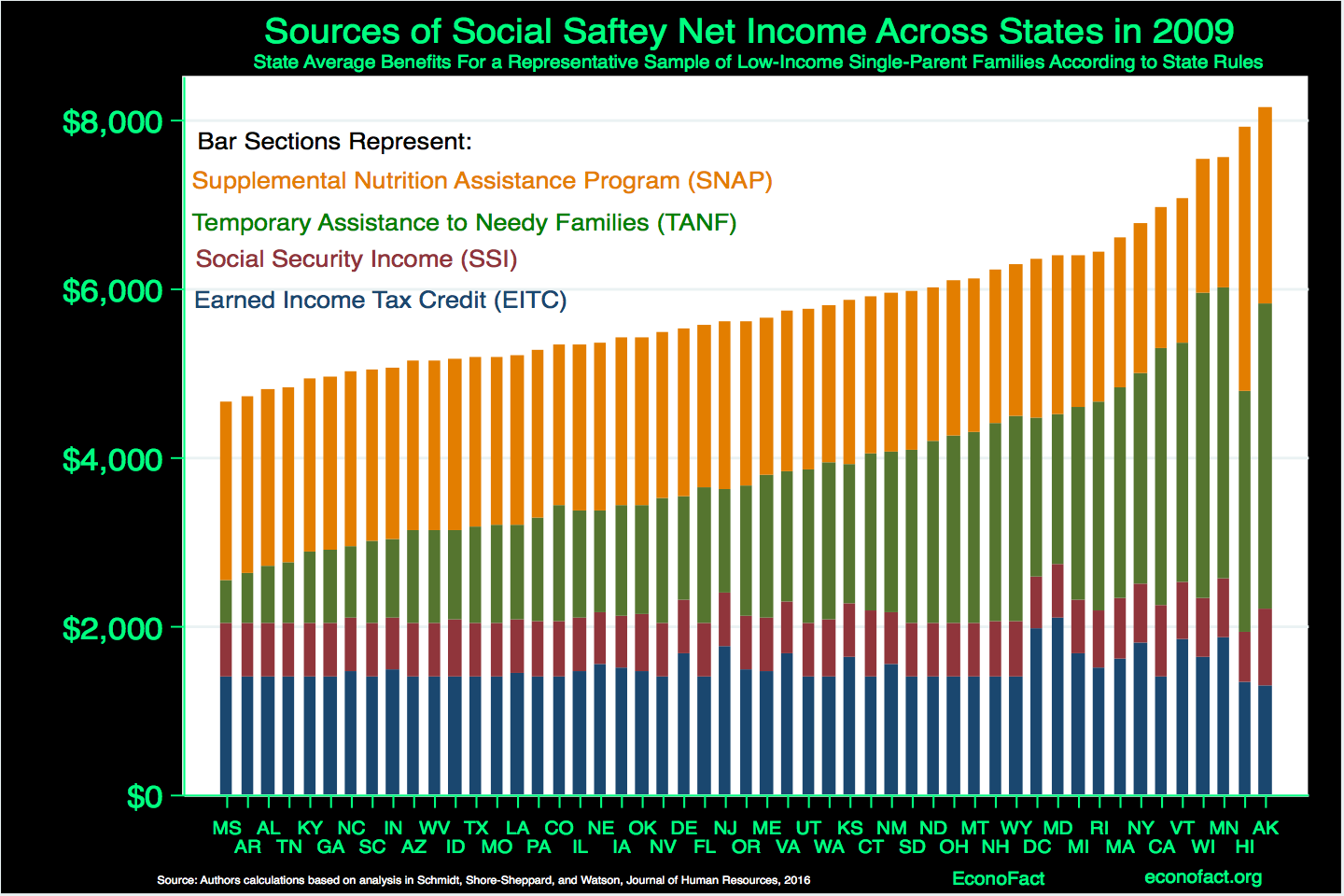Do Safety Net Programs Impact Food Security in the United States?
Williams College
The Issue:
President Trump’s 2018 budget proposes very large cuts in the social safety net. Though the final cuts enacted by Congress may be less severe, any reduction in benefits is likely to impact the wellbeing of people who rely on safety net programs. Many low income families depend on assistance from more than one program, so the combined effect of the cuts is likely to have a larger impact than it might appear at first glance.
What impact will a weakening of the safety net have on how many Americans will be worried about where their next meal is coming from?
The Facts:
- The 2018 Trump budget released on May 23 proposes massive cuts to the safety net. Relative to what is projected under current law, ten-year spending on the Supplemental Nutrition Assistance Program (SNAP, formerly known as Food Stamps) would be 28.8 percent lower, and Earned Income Tax Credit (EITC) payments would be 8.3 percent lower. In addition, cash welfare (Temporary Assistance to Needy Families, or TANF) would be reduced 13.1 percent and there would be small decreases in Supplemental Security Income (SSI), a program that supports the low-income disabled (see here for a program-by-program breakdown). Further cuts are expected to health programs and unemployment insurance.
- On average, people collect lower levels of assistance than they are eligible to receive. In our research, Lara Shore-Sheppard, Lucie Schmidt and I have estimated that during the period of 2001-2009, an average low-income, non-immigrant single parent with children was eligible for about $5700 per year in combined food assistance, cash benefits, and the Earned Income Tax Credit. But of the $5700 for which families appear to be eligible for on paper, they only report receiving an average of $3500. This includes roughly $1300 in food assistance, $1500 from the EITC, $300 from TANF, and $400 from SSI. Research suggests that a combination of lack of information, a burdensome application process, and mismeasurement explain the gap.
- Research clearly shows that the generosity of the safety net has an impact on a household's ability to maintain stable and adequate access to food. The U.S. Department of Agriculture defines food insecurity as a "household-level economic and social condition of limited or uncertain access to adequate food," which is measured by a battery of questions such as: "In the last 12 months, did you ever cut the size of your meals or skip meals because there wasn't enough money for food?" An estimated 12.7 percent (15.8 million) of U.S. households were food insecure at some time during 2015, according to the U.S. Department of Agriculture. Our study of the 2001-2009 period found that rates were particularly high for the low-income,single-parent families with children that are most reliant on the safety net: 33 percent of these families lived with food insecurity. The results showed that cutting the safety net raised the likelihood that low-income, single parent families report that they ever ran out of food money, that they sometimes did not have enough food to eat in the house, and they had been hungry but did not eat because they did not have enough money for food. Decreasing the average annual benefits available by $1000 - a back-of-the envelope estimate of what might happen under the proposed Trump cuts - is projected to make an additional 11 out of every 1000 low-income, single-parent families food insecure.
- Both food assistance and cash benefits have impacts on food insecurity. Our research as well as that of others suggests that food stamps and cash are fairly interchangeable (see this study for instance). But given that traditional monthly cash assistance has become available to very few in the post-welfare reform area, food assistance is increasingly the core support for low-income families (see this EconoFact memo). The fact that the cuts are focused on households with more than six members means that children will be particularly impacted.
- The structure of the proposed cuts would also exacerbate disparities in safety net generosity across states because of the way federal and state programs are connected. Right now, states have a great deal of discretion in how generous to be with their TANF dollars, and those differences explain most of the difference in overall safety net generosity across states (see chart). But because TANF income is counted in the formula determining federal SNAP benefits, residents of Missouri get more SNAP dollars than residents of Minnesota. In other words, SNAP partially offsets differences that arise from state safety net decisions. Cuts to the SNAP program would weaken this key equalizing role the federal government currently plays. And the budget proposal to require states to match federal SNAP funds would further widen differences across states.
- The cuts to the safety net would be particularly damaging for residents of the South. The eight states with the least generous safety nets are in the South. According to our study based on 2009 data, a typical low-income single-parent family would be eligible for $7500 in combined cash and food assistance in Minnesota, whereas a family with the same characteristics in Missouri would be eligible for less than $4700. Differences in the cost of living are not large enough to compensate for this gap. Further reducing support in the states that have lower benefits would impose significant hardship.
What this Means:
The safety net makes a clear and measurable impact in the lives of low-income families and reduces their food insecurity. The proposed cuts will increase food-related hardship and widen disparities in safety net generosity between states.
Like what you’re reading? Subscribe to EconoFact Premium for exclusive additional content, and invitations to Q&A’s with leading economists.

